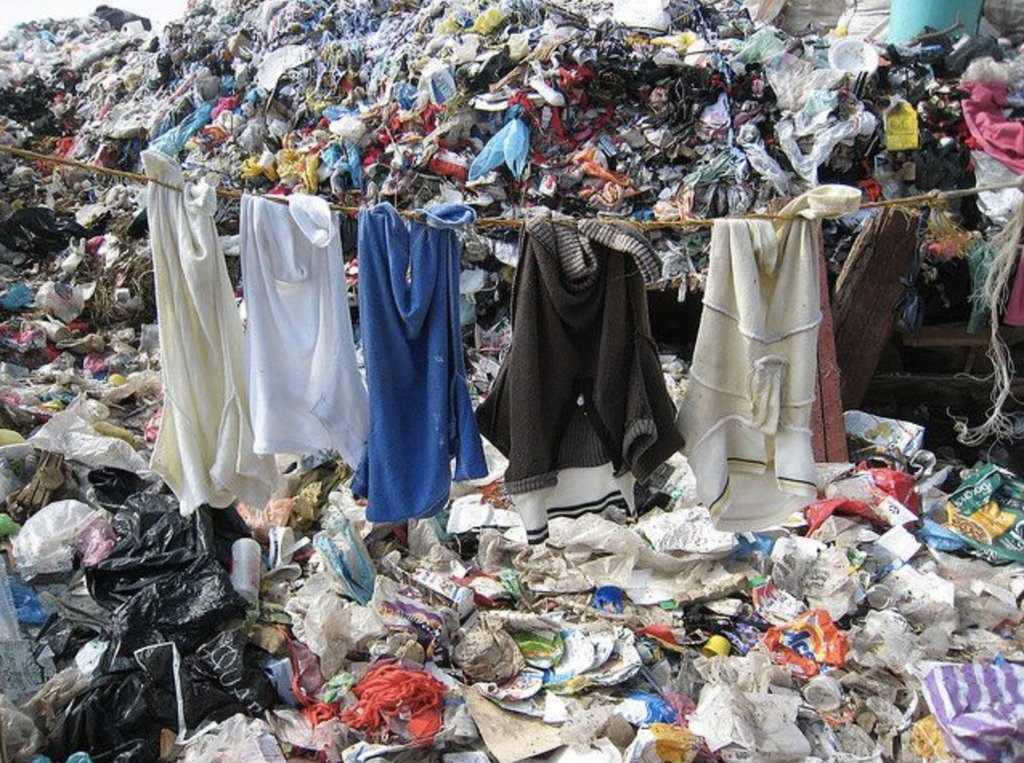Not using clothes made of materials that are difficult to decompose, choosing clothes that can be worn many times... are solutions to eliminate fast fashion , move towards sustainable fashion and contribute to "greening" this industry that is causing serious environmental pollution.
The problem of “fast fashion”
Fast fashion is trendy clothing that is easily accessible at a low cost. However, it goes out of fashion very quickly and is mostly made with cheap materials that are not durable and are difficult to use in the long term. This means that fast fashion is often thrown away after just a few wears, creating fashion waste and contributing to environmental pollution.
According to research, the textile and fashion industry is one of the largest employers, but it is also the second largest polluter after the oil industry. Due to the demand for low prices, fast fashion manufacturers often try to cut costs as much as possible, including environmental treatment costs.
Fast fashion often uses synthetic fabrics like polyester, nylon, and acrylic—materials that take hundreds of years to biodegrade. According to the International Union for Conservation of Nature (IUCN), an estimated 35% of non-biodegradable microplastics released into the ocean come from washing synthetic textiles like polyester.

Fast fashion is harmful to the environment. (Illustration)
The fashion industry is also responsible for 8-10% of global carbon emissions each year. Of the total amount of fabric used to produce fashion, 87% is eventually incinerated or disposed of in landfills after use. By 2050, the fashion industry’s greenhouse gas emissions will increase by more than 26% if current production rates remain unchanged.
It can be seen that each piece of clothing thrown away will not only waste money but also cause a burden in waste treatment in localities and countries. Fashion waste, if not treated, can take up to 200 years to decompose in landfills. During the decomposition process, they can create methane gas, toxic chemicals and dyes that can seep into the soil and groundwater, causing pollution.
Developing “sustainable fashion”, “circular fashion”
To contribute to environmental protection and to minimize the use of “fast fashion”, fashion businesses have gradually shifted to sustainable fashion and circular fashion models.
Sustainable fashion will focus on providing products using green, organic, recycled materials, or reducing waste generated during production and transportation. Fashion brands are only considered “sustainable” when they use environmentally friendly materials and reduce CO2 emissions during production.
According to environmental experts, “greening” the fashion supply chain is a big issue that needs to be studied. The use of polluting synthetic fabrics can be replaced with environmentally friendly fabrics such as linen, silk, hemp, organic cotton, etc.
Circular fashion, on the other hand, focuses on extending the material life of the product, in order to eliminate any negative impact on the environment. In other words, circular fashion focuses on reusing old products and using them over and over again for a fixed, long-term period.
Up to 90 fashion brands and retailers such as Nike, Adidas, Ganni, Reformation, Lacoste... have signed the 2020 Circular Fashion System Commitment of Global Fashion Agenda.
Many circular fashion programs have been organized and attracted the attention of the people. The H&M brand has organized a garment collection, encouraging users to bring in unwanted clothes for recycling. In return, users receive a 15% discount coupon for an H&M product. Similarly, the denim brand Levi's offers a 20% discount when customers bring in old clothes they no longer want. Nike has a shoe recycling program, turning old shoes into raw materials for reuse in insulation, rubber flooring, and more.

Bags and backpacks are recycled from old jeans. (Photo: Cleanipedia)
On the part of each individual, by taking small actions such as limiting the trend of buying clothes that are only worn once or twice and then thrown away; giving away old, out-of-date clothes; using secondhand items; reducing laundry to save water; reducing chemical emissions... all contribute to saving the planet that is being "surrounded" by hazardous waste.
Mai Anh























![[Photo] Gia Lai provincial leaders offer flowers at Uncle Ho's Monument with the ethnic groups of the Central Highlands](https://vphoto.vietnam.vn/thumb/1200x675/vietnam/resource/IMAGE/2025/7/9/196438801da24b3cb6158d0501984818)














































































Comment (0)